Favored by Qatari royals, this is an artistic treasure of the Mughal Empire
Whenever people talk about Indian history and Indian treasures, they cannot avoid mentioning a powerful empire in history - the Mughal Empire. It is the darling of today's auction world and has always been full of mystery. In addition to its strong national power, the kings of this empire also paid great attention to the development of culture and loved art and collection. Today, let us wipe away the dust of history and unveil the mystery of the Mughal Empire through these dazzling art treasures.
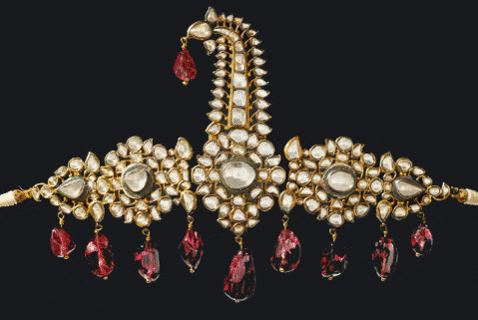
▲The picture comes from Christie’s auction website

Jewelry auction focus
In his book The Origin of Art, German art historian Grosse mentioned: "The love of decoration is the earliest and strongest desire of mankind." Jewelry, as a material that combines beauty, craftsmanship, rarity and durability, has been deeply sought after by people from ancient times to the present.
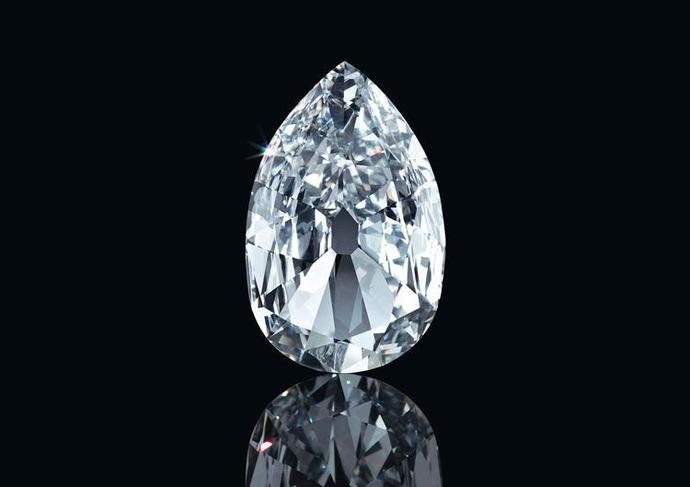
▲The picture comes from Christie’s auction website
Nowadays, more and more consumers are flocking to jewelry that is of historical significance or once belonged to the royal family, so the field of jewelry auctions pays more and more attention to the characteristic of "rarity". Due to its uniqueness and rarity, jewelry from the Mughal Empire is often auctioned by major auction houses . The most interesting one is the "Maharajas & Mughal Magnificence" auction held by Christie's New York in 2019.
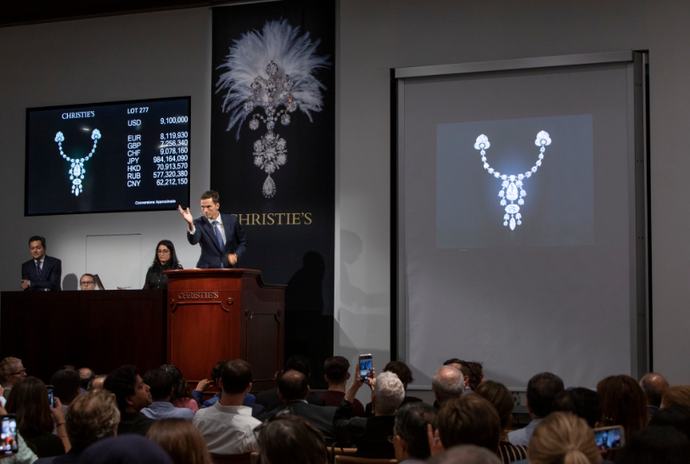
▲ Christie’s New York “Treasures: Maharajas and Mughals” auction scene picture from the Internet
The auction included nearly 400 pieces of fine royal collections of jewels and exquisite ornaments spanning more than 500 years of history, including scabbards, weapons and decorative ornaments used by Indian kings. These heavyweight jewels and ornaments are the product of the fusion of Indian culture and the culture and art of European countries.
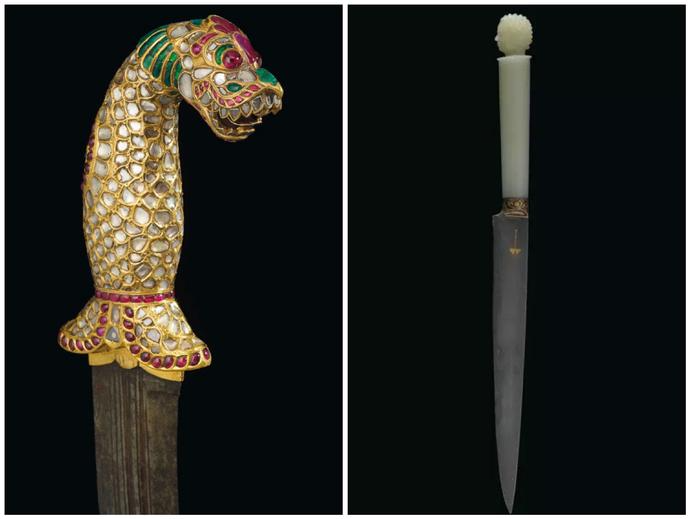
▲Left: A dagger with a gold handle inlaid with gemstones, c.1790-1810. Right: The dagger of Shah Jahan, the fifth king of the Mughal Empire. The picture comes from Christie’s auction website.
In the tradition of the Mughal Empire, jewelry is an indispensable and important object to demonstrate one's authority, so the rulers attach great importance to rare gemstones. The amazing royal collections in this auction all reflect the love of Mughal kings for gemstones. For example, this antique necklace uses spinels of different sizes and pearls, and the pendant is also decorated with a small emerald, which is exquisitely shaped.
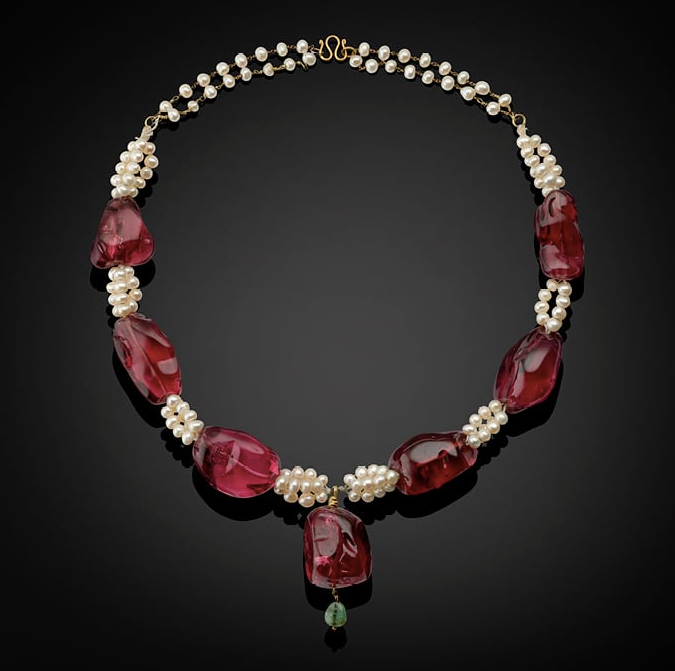
▲The Mughal Empire's court spinel necklace, c.1607-1608, sold for $3.015 million. The picture comes from Christie's auction website
The picture below is an antique spinel and enamel ring from the time of Shah Jahan. The gemstone is also engraved with special patterns, and the combination of gold and blue enamel shows the royal style.
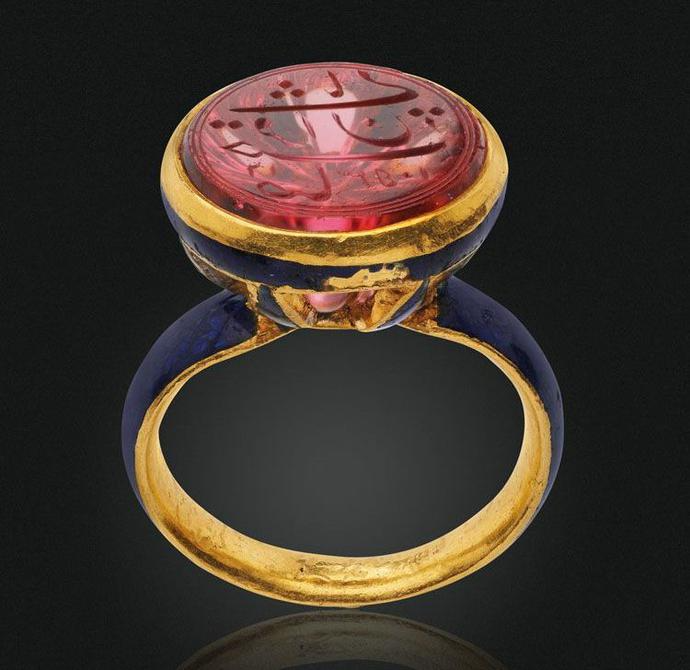
▲The Shah Jahan Seal Ring.c.1643-1644, picture from Christie’s auction website
Jewelry from the Mughal Empire often uses intricate and sophisticated enamel-inlaid gemstone craftsmanship . For example, the gold pen case and ink bottle in the picture below are inlaid with diamonds, rubies and emeralds. The unique shape is a royal model. According to some sources, during the Mughal Empire, kings regarded jeweled pen cases and ink bottle sets as a symbol of the highest honor, and usually only the royal family and people of prominent status could own them.
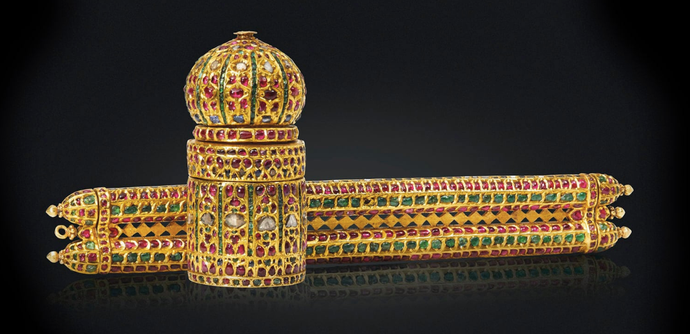
▲Davat-I Dawlat, a gold pen case and ink bottle inlaid with emeralds, rubies and diamonds, late 16th century, sold for $1.575 million. The picture comes from Christie’s auction website
The enamel diamond set box in the picture below is also a highlight of the Mughal auction. It includes a large box, eight small boxes, and a matching tray. All the boxes are inlaid with green enamel diamonds, and the outer edge of the tray is decorated with dark blue enamel, with exquisite craftsmanship.
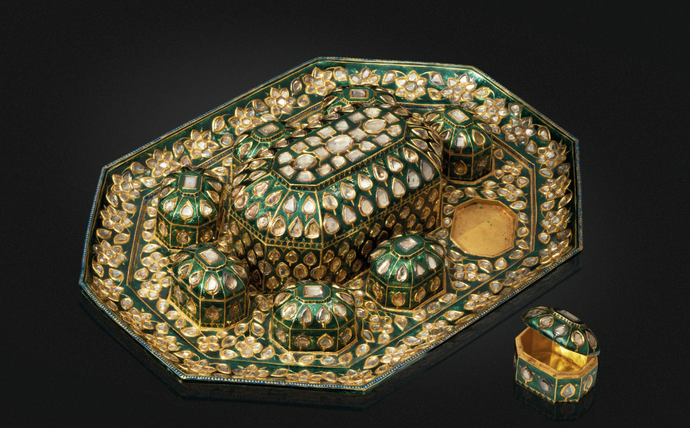
▲Enamel and diamond set box, Hyderabad (DECCAN) c.1760-1780, sold for 975,000, picture from Christie’s auction website
The jewelry of the Mughal Empire is special because, in addition to being embellished with large areas of gemstones, it is also very particular about design and theme. Birds are a theme they are keen to depict , among which falcons play an important symbolic role and are often closely associated with the royal family.
The Mughal bird-shaped turban decoration in the picture below is an excellent example of Indian jewelry in the Al-Thani collection. The turban is inlaid with round, pear and various shapes of table-cut diamonds and pearls. There are also 10 garnet-colored spinels hanging on the bracket.
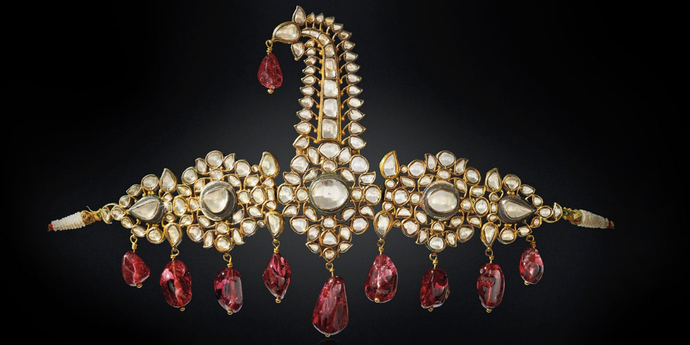
▲"The Nizams of Hyderabad Sarpech" antique diamond, spinel, pearl and enamel turban decoration, about 1800-1850, sold for $1.155 million, picture from Christie's auction website
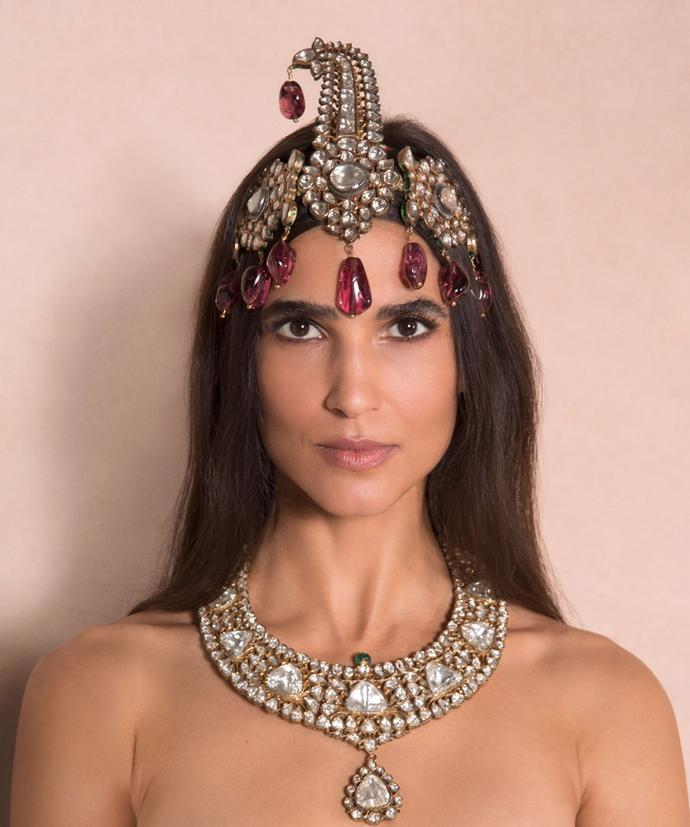
▲Model Teresa Lourenco wears Mughal jewelry. The picture comes from Christie’s auction website
This bird-shaped pendant from the late eighteenth century is inlaid with diamonds and a variety of gemstones. The center is a heart shape surrounded by disc-cut diamonds of various shapes. The body is inlaid with rubies and emeralds of various shapes. The wings and tail are also decorated with dangling pearls. It is luxurious and exquisite.
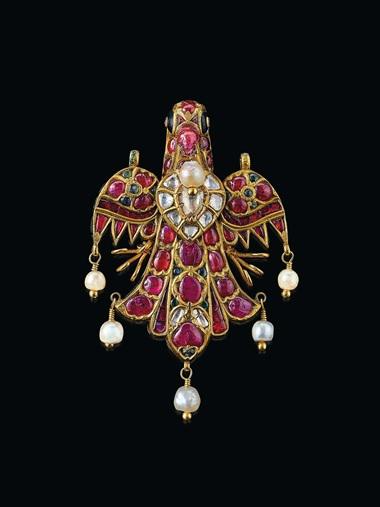
▲Antique diamond and multi-gemstone bird pendant, late 18th century, picture from Christie’s auction website
This parrot-shaped jewellery from Hyderabad is a combination of splendour, exquisite craftsmanship and unique shape. It is decorated with green champlevé enamel and emeralds set with kundan (an ancient Indian jewellery setting technique), diamonds, rubies, agates and emeralds, and holds an emerald pendant in its beak. At the time, bird-shaped jewellery inlaid with precious gems was often given as a gift to the royal family.
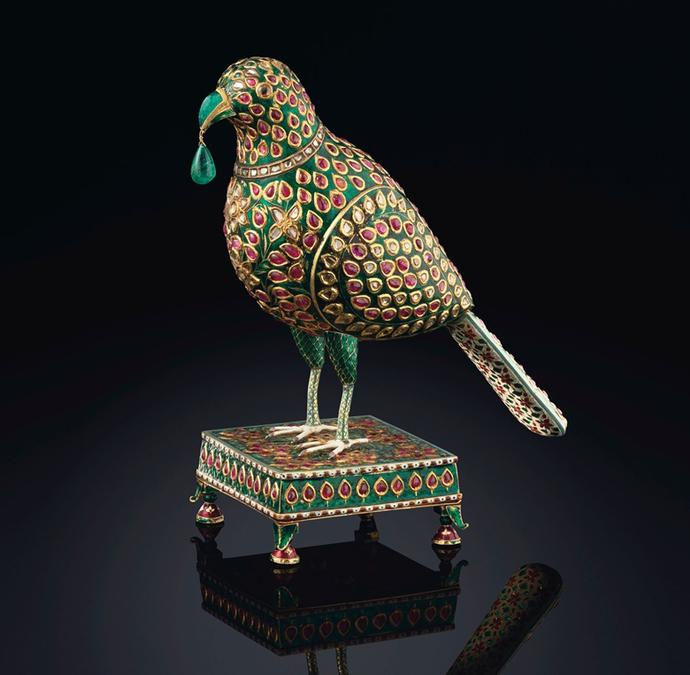
▲Parrot-shaped jewelry inlaid with enamel gemstones, the bird's body is inlaid with diamonds, rubies and emeralds, about 1775-1825, the picture comes from Christie's auction website
In addition to the royal collections from the Mughal Empire, the auction also exhibited some rare jewels from the Indian maharajas and nobles in the early 20th century. According to Christie's, this collection is the most valuable jewelry auction and the highest-grossing Indian and Mughal collection auction in history.

There are not only rare treasures, but also brilliant artistic achievements
The Mughal Empire was a feudal dynasty established by the descendants of Turkified Mongols after they invaded India . The regime reached its heyday during the reign of the third king, Akbar. The empire's territory covered almost the entire Indian subcontinent, as well as Afghanistan in Central Asia and other places.
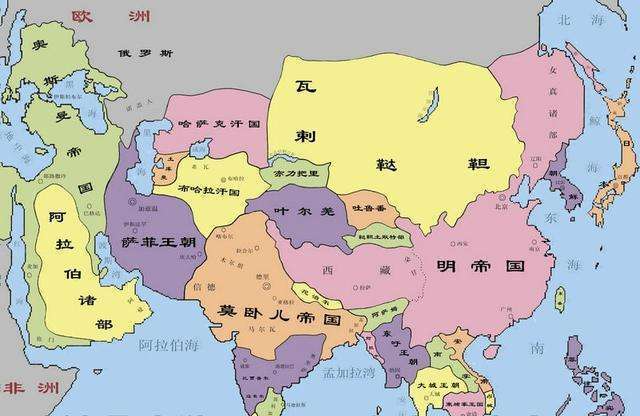
The Mughal Empire not only shines in jewelry craftsmanship, but also has brilliant achievements in painting, architecture, etc. The Mughal kings all have a heart that loves art. During their more than 300 years of rule, they left countless treasures for art history.
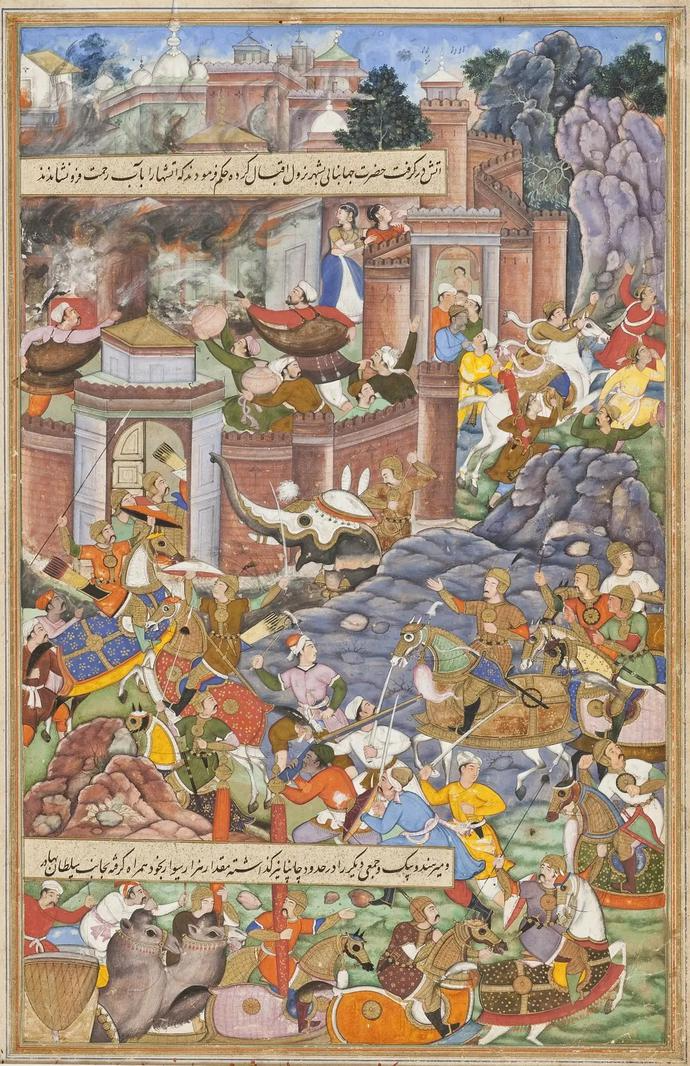
▲Kamālud Dīn Behzād《The Seduction of Yusuf》c.1590 Image source: Internet
Miniature is a small painting with fine details. Its biggest feature is the bright colors and meticulous details. Miniature was widely used and developed in Persia, and it also influenced the painting of the Mughal Empire. The formation of Mughal miniature began during the reign of Babur Humayun (1530-1555) . Since Babur was very fond of Persian painting, there were many Persian painters serving in the court at that time. They blended the Persian art they brought with them with the traditional style of India, and combined with the introduction of Western painting, formed the unique Mughal miniature.
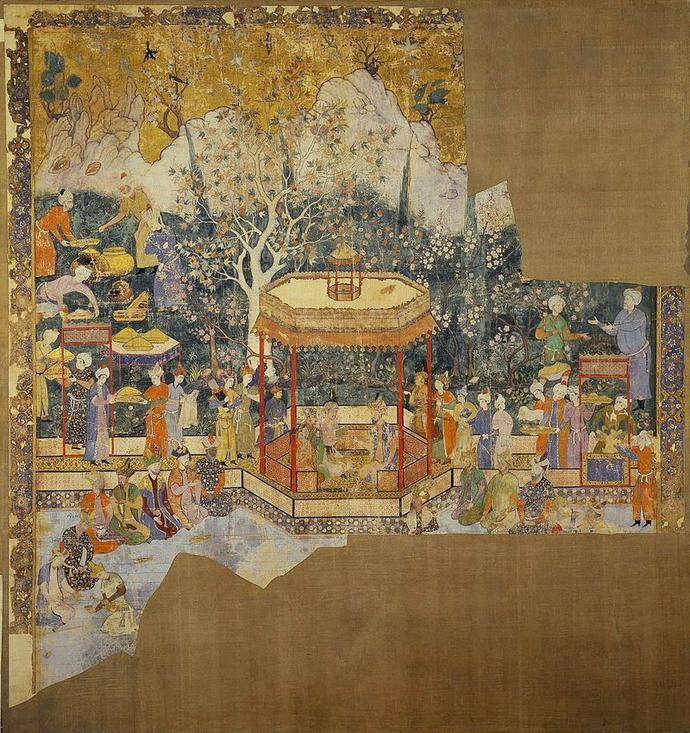
▲Mughal miniature painting, c.1550-1555, image from the Internet
During the reign of Jahangir (1605-1625), Mughal miniature painting reached its peak . The brushstrokes became more refined, the lines were simple and clean, the colors were delicate and exquisite, and the pictures were filled with a naturalistic lyrical tone.
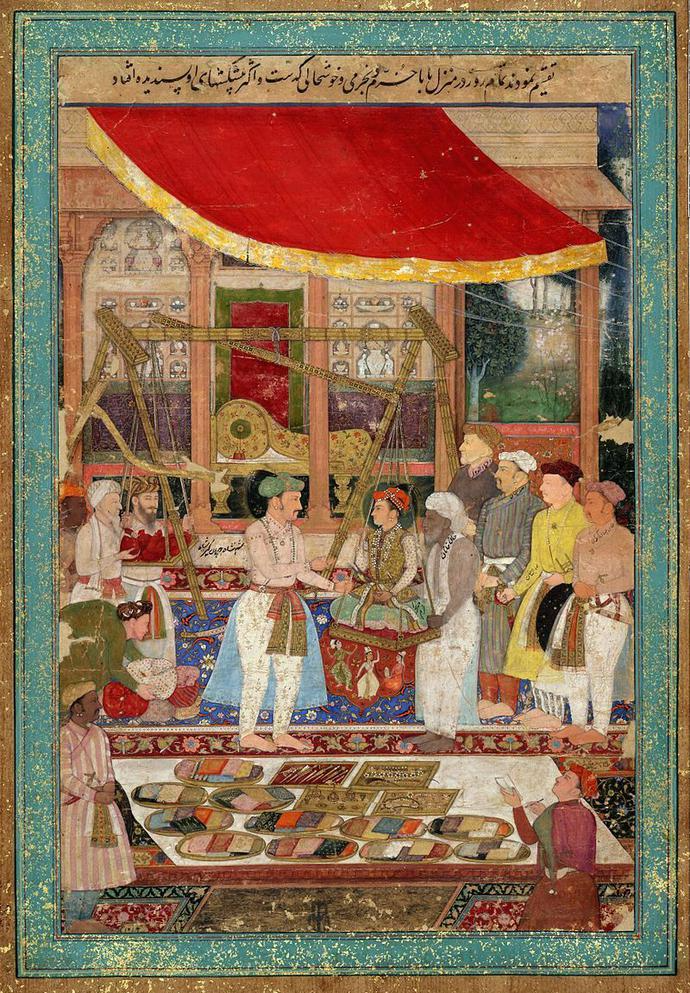
▲Mughal miniature painting, 1610-1615, picture from the Internet
The rulers of the Mughal Empire adopted a policy of cultural integration at home and religious tolerance abroad, giving art a wider space and possibility for development. Therefore, we can see the integration of artistic styles from multiple countries and religions in Mughal art works.
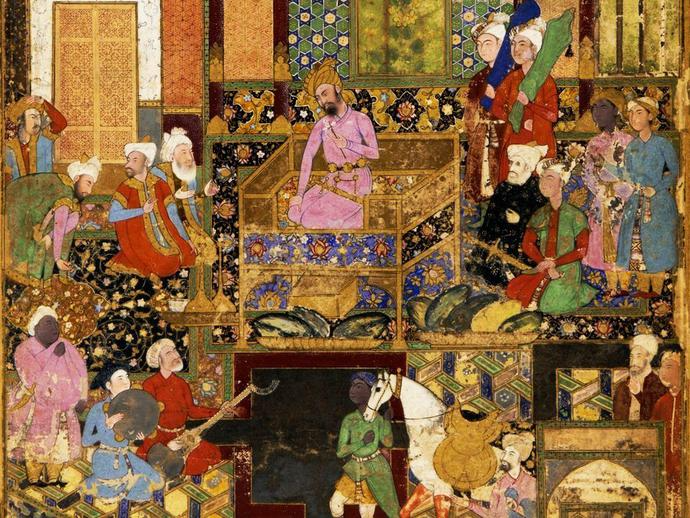
▲The picture of Mughal miniature painting comes from the Internet
In addition to painting, Mughal architecture is also very influential in history. Mughal architecture belongs to Islamic architecture, and the building types mainly include mausoleums, mosques, castles, palaces, etc. Due to the influence of Persian architectural style and combined with traditional Indian architecture, the ornate Mughal architectural style was formed.
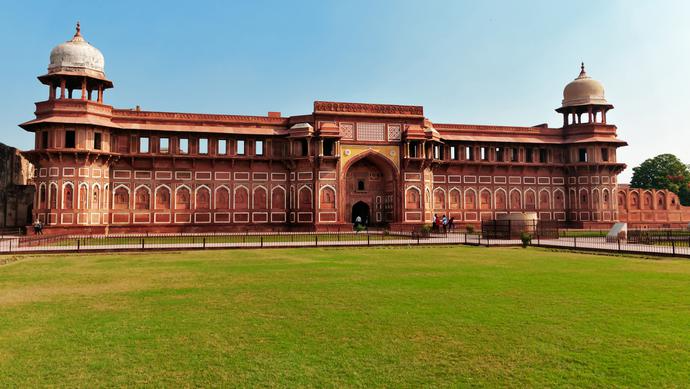
▲Agra Fort, picture from the Internet
The Mausoleum of Humayun is the tomb of Babur Humayun, the second king of the Mughal Empire. It was built in 1556. It is constructed of red sandstone and is intricately carved. The overall square shape, garden-like interior and arched gates on the surrounding walls all reflect the typical Mughal architectural style.
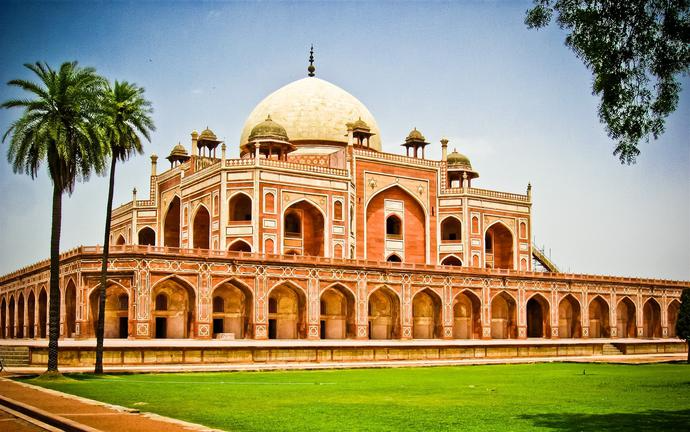
▲The picture of Humayun's Tomb comes from the Internet
The Taj Mahal, built by the fifth king Shah Jahan in 1631, represents the pinnacle of Mughal architectural achievement. It is a huge mausoleum built in memory of his beloved wife, Mumtaz Mahal. The building is made of white marble, with precise geometric design and detailed decoration. The overall style is simple yet majestic. It symbolizes stability, strength and confidence.
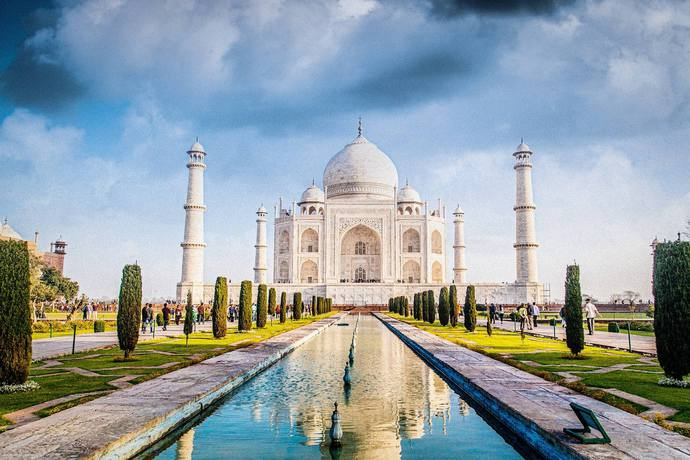
▲Taj Mahal, picture from the Internet

Promoter of Mughal Art Treasures
The art treasures of the Mughal Empire can be known to the world and many people have to mention His Highness Sheikh Hamad Bin Abdullah Al Thani. He is a prominent member of the Qatari royal family and an outstanding collector . He founded a non-profit organization, The Al Thani Collection, whose mission is to promote cultural and artistic undertakings based on its collections . The foundation has a collection of more than 6,000 works of art from ancient times to modern times from all over the world, including antiques, furniture, jewelry, paintings, photography, manuscripts, etc.
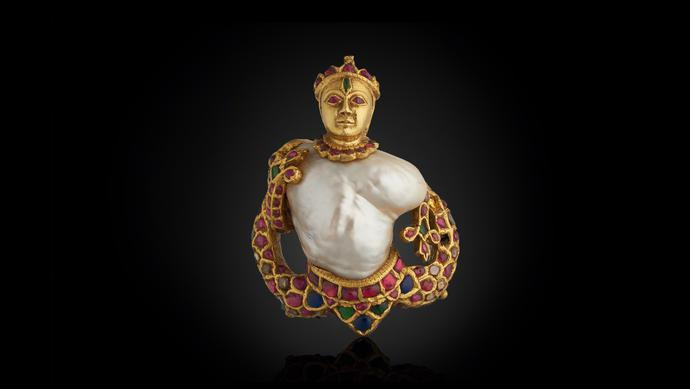
▲Pendant, baroque pearls, rubies in gold, emeralds, sapphires, glass, enamel, c.1575-1625, image copyright Al-Thani Collection
His Highness Al Thani's fascination with Mughal art began in 2009, when he visited the exhibition "Maharajah: The Splendor of Indian Royal Family" at the Victoria and Albert Museum and was immediately attracted by the court art and jewelry of ancient India. From then on, His Highness Al Thani began his journey of "collecting Mughal treasures".
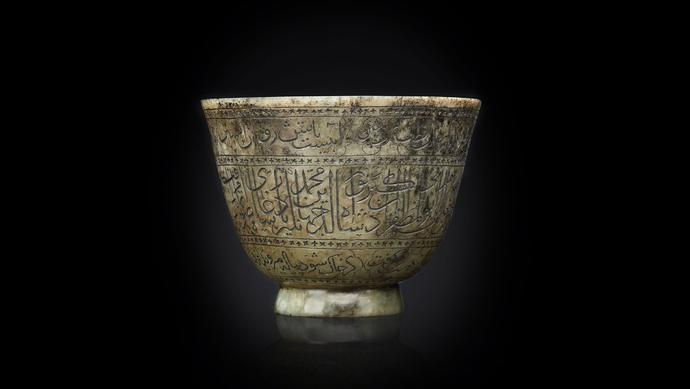
▲Wine glass of Mughal Emperor Jahangir, ancient jade, 5.5x7.4cm, image copyright belongs to Al-Thani Collection
In recent years, Al-Thani Collection exhibitions have been exhibited in the world's top museums , such as the Palace Museum in Beijing, the Metropolitan Museum of Art in New York, the Grand Palais in Paris, the Doge's Palace in Venice, etc. In addition, Al-Thani Collection artworks are also regularly loaned to other museums for exhibition.
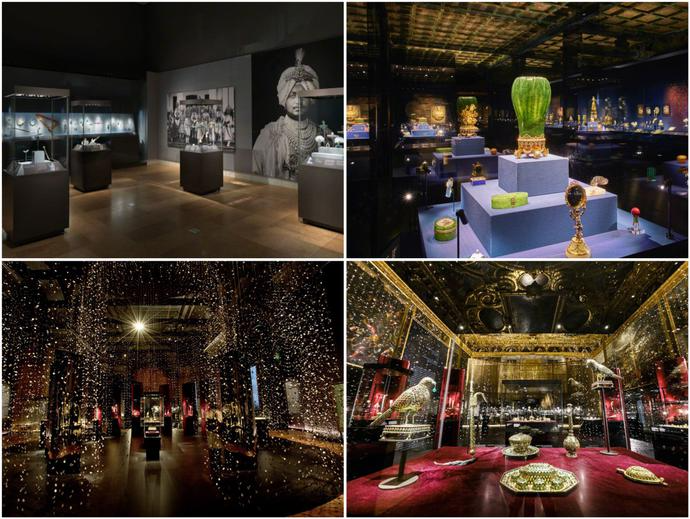
▲Pictures from the Internet, copyright belongs to Al-Thani Collection
In addition, the foundation will make donations to various institutions from time to time to promote cultural and artistic exchanges in various places . For example, in 2019, it donated a chest of drawers made by Jean-Henri Riesener, a royal craftsman from the Louis XV period of France, to the French National Monument Center (CMN). The chest of drawers was purchased by the foundation at a Christie's auction in April of the same year.
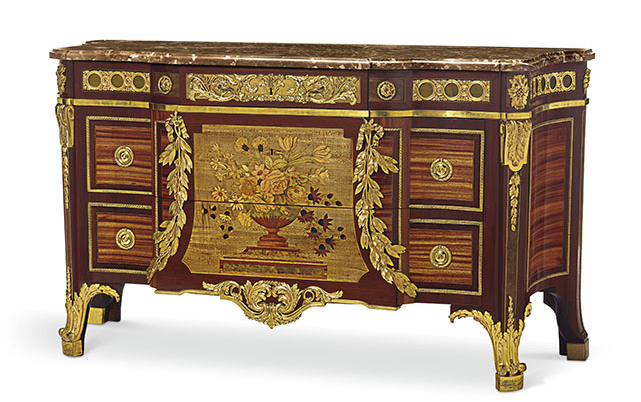
▲ Jean-Henri Riesener chest of drawers, Paris, late 18th century Image from Christie’s auction website
The editor checked the foundation's official website and found that in 2020, the Al-Thani Collection Foundation will exhibit its art collections for a long time in the new museum space located at the Naval Palace (French: Hôtel de la Marine) in the Place de la Concorde in Paris, France, and will also hold a series of thematic exhibitions.
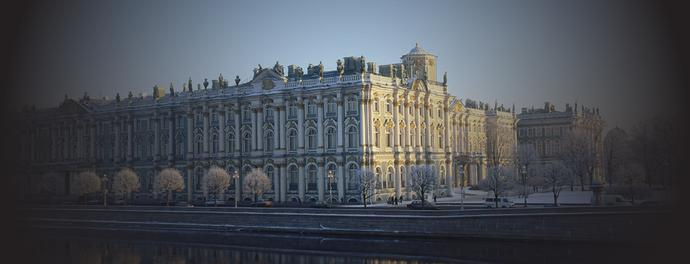
▲ Hôtel de la Marine, Paris, France, picture from the Internet
As the Al-Thani Collection is exhibited around the world, more and more people are seeing the artistic treasures of the Mughal Empire. Looking back at the long river of history, the Mughal Empire is a bridge connecting medieval India and modern India. It is also the Mughal's inclusive and open attitude that created a brilliant cultural and artistic heritage . These treasures are the crystallization of human wisdom, waiting for us to discover and understand them.
Text: Chen Weiran | Editor: Yun Fei
Editor: Miss Jiang
Producer: Big G Little R Mini Sail